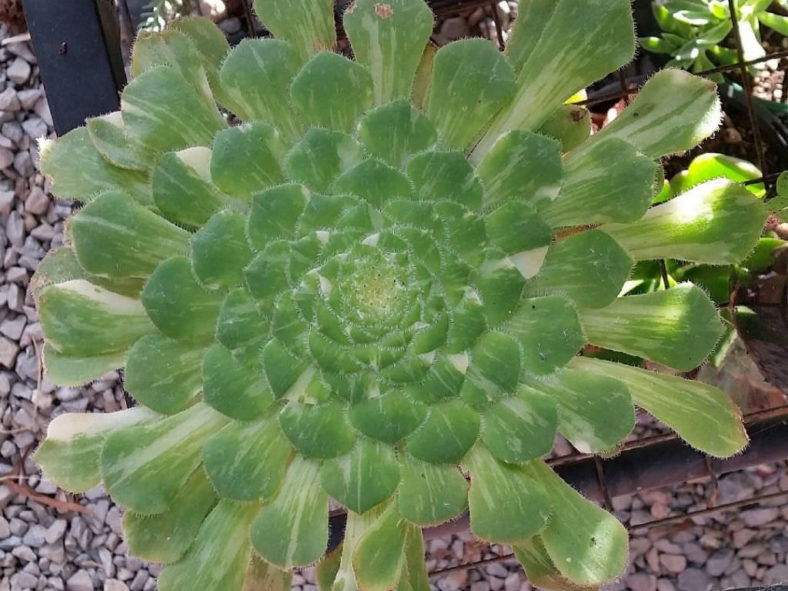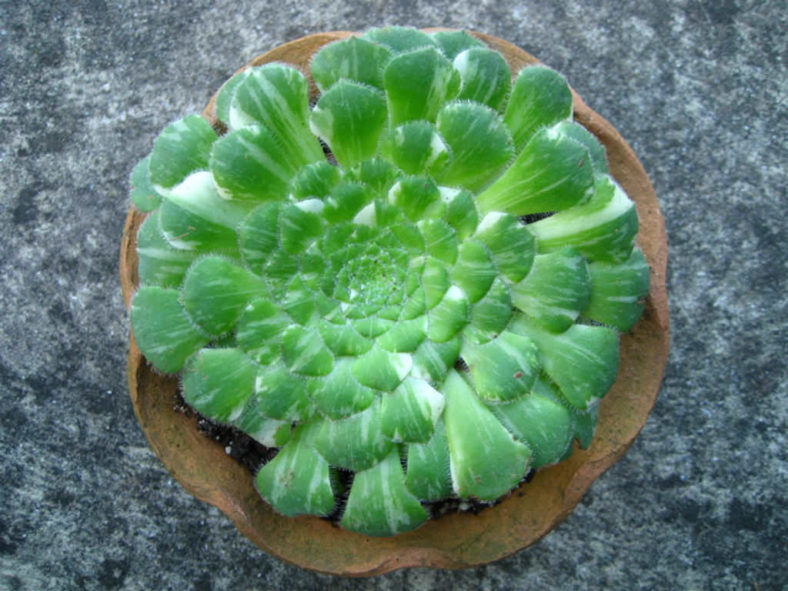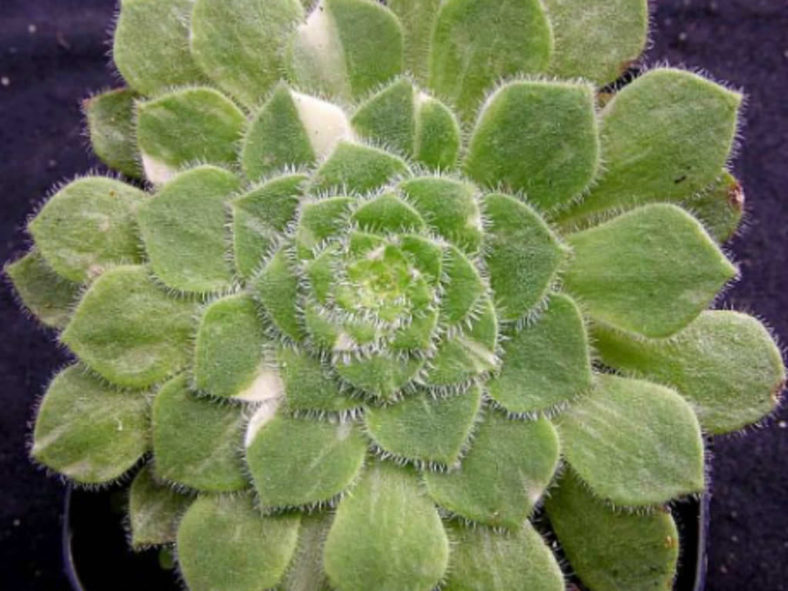Scientific Name
Aeonium tabuliforme 'Variegatum'
Accepted Scientific Name
Aeonium tabuliforme (Haw.) Webb & Berthel.
Synonym(s)
Aeonium tabuliforme f. variegatum
Scientific Classification
Family: Crassulaceae
Subfamily: Sempervivoideae
Tribe: Aeonieae
Genus: Aeonium
Description
Aeonium tabuliforme 'Variegatum' is a beautiful succulent that forms a compact, flat rosette of overlapping variegated leaves. The rosette can reach up to 18 inches (45 cm) in diameter. The fleshy leaves are light green with irregular creamy-white markings. They can grow up to 6 inches (15 cm) long and up to 1.6 inches (4 cm) wide.
The flowers are star-shaped, pale yellow, and appear in clusters on an erect raceme, usually in late spring, reaching up to 24 inches (60 cm) in height.

Hardiness
USDA hardiness zones 10a to 11b: from 30 °F (−1.1 °C) to 50 °F (+10 °C).
How to Grow and Care
Aeoniums do not like hot or dry weather. Therefore, they may go dormant in summer and not require any water except in arid conditions. In extreme heat, their leaves will curl to prevent excessive water loss. Growing them in moist shade will keep them growing, but their true growth season is winter to spring when temperatures are cool, 65 to 75 °F (18 to 24 °C), and damp. In the winter, water whenever the soil has dried out. Test by poking your finger down into the soil an inch or 2 (2.5 to 5 cm). Too much moisture or allowing them to sit in wet soil will cause root rot.
A sandy loam or regular potting mix is better than a mix specifically for cacti and succulents since Aeoniums need some moisture. If you grow them in containers, repot them with fresh potting soil every 2 to 3 years.
Feed during the growing season with a half-strength balanced fertilizer every month or so. Do not feed while dormant.
See more at How to Grow and Care for Aeonium.
Origin
Aeonium tabuliforme 'Variegatum' is a form of Aeonium tabuliforme selected for its variegated foliage.
Links
- Back to genus Aeonium
- Succupedia: Browse succulents by Scientific Name, Common Name, Genus, Family, USDA Hardiness Zone, Origin, or cacti by Genus
Photo Gallery
Click on a photo to see a larger version.


